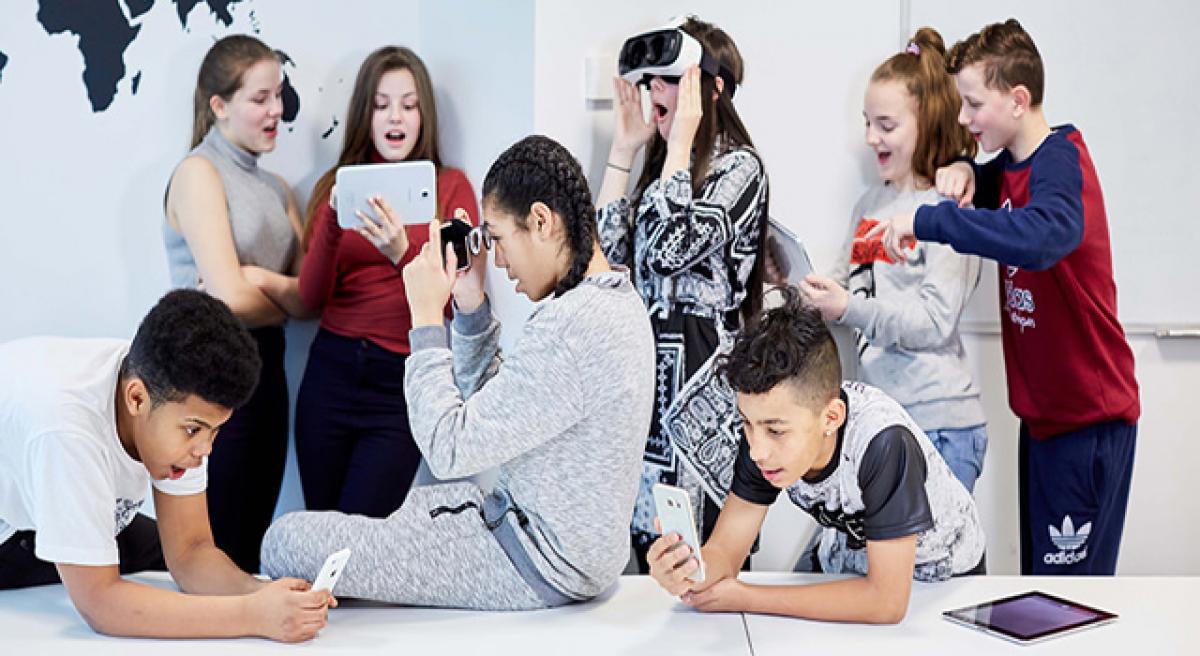Live
- Youth urged to donate blood to save lives
- National Energy Conservation Week from today
- Tourism projects to be put on fast track as VMRDA sets targets
- AI in KGBVs to empower students, build competencies
- Waltair Division observes ‘Energy Conservation Week’
- Srikakulam police bust two fake note gangs
- 3 held, 810 kg ganja seized
- Workshop on ‘Live Agri-technologies’ concludes at SPMVV
- Advancing Biomedical Research with NMR techniques
- Key Highlights of India in 2024
Just In

Media adoption is driven by increasing levels of immersion; and virtual reality (VR), once it\'s sufficiently refined, will be by far the most immersive media experience yet available.
Media adoption is driven by increasing levels of immersion; and virtual reality (VR), once it's sufficiently refined, will be by far the most immersive media experience yet available.
But, like other new forms of media and hardware, VR will first have to go through the traditional pattern of adoption when it comes to use by children.
And after that happens, when kids start using VR in earnest, we'll have plenty of lessons to learn from what happens next. How will kids interact with this potentially paradigm shifting media? Perhaps the experience we've gleaned from previous media cycles can give us some insight.
The early hardware phase
In its current state, VR is still a nascent platform. Although consumers can easily assemble their own cardboard viewers at little-to-no-cost, or acquire a Gear VR headset when purchasing a Samsung phone, the technology remains in flux. There is currently no low-cost mobile VR solution that's on par with an HTC Vive unit. And the market for VR apps is still relatively small.
There have been, however, two hardware platforms that bear comparisons to today’s VR space: the Apple Newton and the Palm Pilot. Both were visionary products that predated the iPhone. People “knew” that these platforms were the forbears of great, visionary things to come. And the products were fully usable.
But both still appeared early in the lifecycle of mobile/tablet technology. The promise of tantalizing new hardware tends to invite droves of early adopters, but it takes more than technology alone to reach the tipping point of mass adoption.
Mass market hardware and early kid-centric content
Remember when the iPhone first came out? It was elegant, expensive, and used by early adopters. In the early cycles of the iPhone, there were no apps and the device was seen primarily as a grown-up tool. Over time, however, the proliferation of smartphone devices, lower prices and iterative hardware generations contributed to the mass adoption of the iPhone.
Similarly, in coming years, we will see advances in mobile VR technology that will lower costs and continue to improve fidelity and immersion. Once higher-fidelity “commodity” VR first becomes available through Google Daydream (mobile) and PlayStation VR (console), it will transition from early adopter technology to mass adoption.
We will also certainly see more and more content for kids in the VR space as headsets become commoditized and safe for adults. Disney clued in on the demand for kid- and family-friendly animated content in the 1930s and '40s, starting with the release of Snow White. Up until that point, films generally had been black and white and focused on adult themes. A comparable circumstance will occur with the commoditization of VR hardware.
Commodity hardware and broad kids content
With the commoditization of hardware will come the inevitable concern that kids are “watching too much.” And we've already seen this happen: In the '70s and '80s, pre-internet television expanded rapidly, to bring forth the “Saturday morning cartoons” phenomenon, at which time channels became saturated with content -- and ads -- for kids.
Like that phase of TV, VR has a similar potential for abuse, as it becomes an electronic babysitter. This in turn will prompt the typical transitional phase of a medium, where, in reaction to overuse by kids, and action by parents and activist groups, more and more educational content will appear.
Of course, such content already exists on TV. Today’s lineup goes well beyond the early Sesame Street, with kid-friendly educational content from National Geographic, Discovery and the History Channel. With VR, content will largely define that medium's success, just as it has with other forms of media.
Kids as authors (user-generated content)
In the final stage of media introduction, kids will become not just consumers of the media, but masters of it. In schools today, we teach our kids to write stories and produce video projects. In the early days of movie and video, kids were purely consumers.
Once the VR space takes hold, kids will ultimately become "world-smiths," as they create immersive social experiences utilizing powerful, easy-to-use tools found on 3D user-generated content platforms. These platforms will empower children to create and distribute VR content for consumption by their peers.
The full maturation
of the media
It has taken TV 60-plus years to progress from those early, grainy black and white images of cowboys, gangsters and detectives to today’s 4,000-pixel, high-definition screens. Keeping this time frame in perspective can help us understand how VR will roll out over the coming years.
Just as TV has become much more “real,” so too will VR. And as VR becomes more real, it will become increasingly similar to the real world, offering a variety of uses and applications, from entertainment to education.
And, here, one of the skills that people will develop is an awareness of when they are in VR, versus the real world. Just as we saw in the movieInception, where the movement of a spinning top helps a central character discriminate between dreamland and reality, kids in the future will become adept at tricks that let them know what is real and what is not.
Source: entrepreneur.com

© 2024 Hyderabad Media House Limited/The Hans India. All rights reserved. Powered by hocalwire.com







